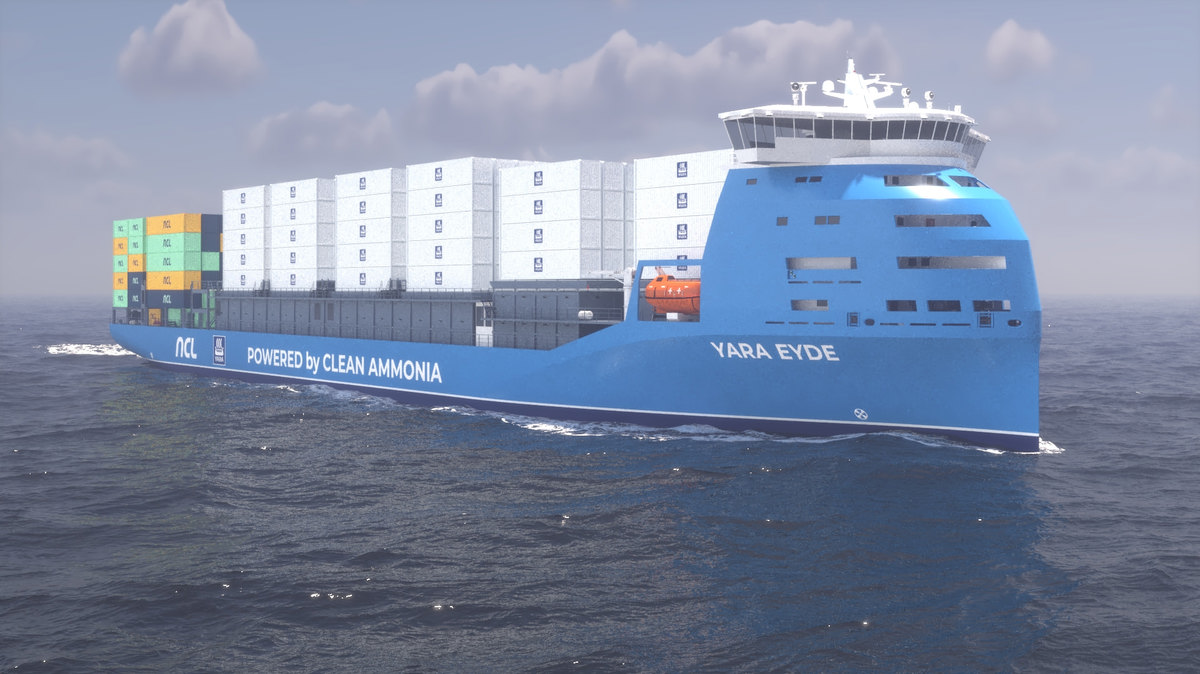Most green corridors are stalled by unclear fuel pathways – report
Despite the rise in green shipping corridors, many have yet to finalise the zero- and near-zero emission fuel to be used in these corridors.
 PHOTO: Concept design of an ammonia-fuelled container ship, Yara Eyde. Yara Clean Ammonia
PHOTO: Concept design of an ammonia-fuelled container ship, Yara Eyde. Yara Clean Ammonia
In the past year, 18 new green shipping corridor initiatives have been launched globally, marking a 40% increase and bringing the total to 62.
The findings were published in the 2024 Annual Progress Report on Green Shipping Corridors, which focuses on green corridor initiatives up to 30 October this year. The annual report, jointly released by the Getting to Zero Coalition and the Global Maritime Forum (GMF), examines progress in green corridor projects over the past three years since the concept was introduced at COP 26 in 2021.
Of the total number, six corridors have progressed from the exploration to the implementation stage, the report states.
Despite significant efforts to implement green shipping corridors, the report highlights that there has been little progress in finalising fuel pathways for many of these projects over the past year. A total of 14 new initiatives, along with 17 existing ones, have yet to commit to a fuel pathway.
The initiatives represent a mix of projects focusing on a one-fuel and multiple-fuel approach. For initiatives that have selected a fuel pathway, methanol, ammonia, and electrical power are the most popular.
Methanol is the “best-represented” fuel in these projects with 18 projects opting for methanol mostly in the container segment, the report stated. Ammonia has ranked second as the fuel of choice in 15 green corridor projects emerging as the most preferred among bulk carriers.
The “Feasibility Wall”
Despite significant headway in green corridor initiatives in the past year, a “feasibility wall” remains a major obstruction in the further development of these initiatives. This “feasibility wall” is triggered by costs emerging due to switching to zero-emissions fuels, the report said.
The only way to solve this cost barrier is for national governments to play a “central role” in promoting a regulatory landscape that can unlock new opportunities, the report noted.
A lack of a national regulatory framework to bridge fuel cost gaps can create “bottlenecks” that will limit the development of green corridor initiatives, the report asserted.
By Manjula Nair
Please get in touch with comments or additional info to news@engine.online





